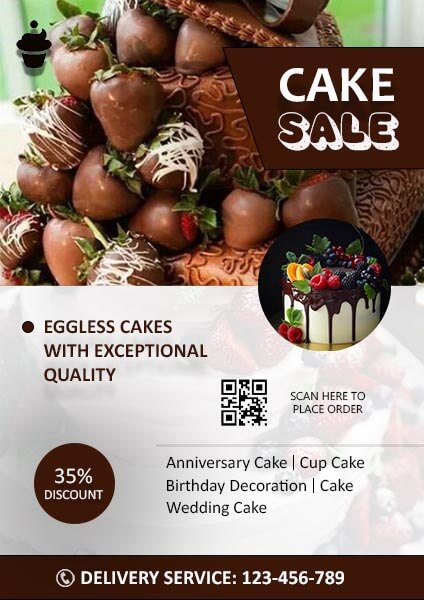In the fast-paced world of business marketing, grabbing and retaining customer attention is crucial. Business flyers, a staple in traditional marketing, have evolved with the integration of digital elements. One such element is the QR code. By adding QR codes to your business flyers, you can significantly enhance customer engagement and drive more interactions. But how exactly can you use effectively QR codes in your business flyers? Let’s dive in.
What Are QR Codes?
Definition and Brief History
QR (Quick Response) codes are two-dimensional barcodes that can be scanned using a smartphone or QR code reader to quickly access information. Developed in Japan by Denso Wave in 1994, QR codes were initially used for tracking automotive parts. Today, they have found widespread use in marketing, payments, and information sharing.
How QR Codes Work
When scanned, a QR code can direct the user to a URL, display a text message, open an email draft, or perform other predefined actions. This versatility makes them a powerful tool for bridging the gap between offline and online media.
Benefits of Using QR Codes in Business Flyers
Increased Customer Interaction
QR codes make it easy for potential customers to engage with your business. By simply scanning a code, they can access your website, contact information, or promotional content, creating a seamless interaction experience.
Enhanced Tracking and Analytics
Using QR codes in business flyers allows you to track and analyze customer interactions. You can see how many people scanned your code, what content they accessed, and how long they engaged with it. You can use this data to fine-tune your marketing efforts.
Cost-Effectiveness
Integrating QR codes into your business flyers is a cost-effective way to add a digital component to your traditional marketing materials. It eliminates the need for additional printing of URLs or contact information, saving both space and resources.
Types of QR Codes
Static QR Codes
Static QR codes are made with fixed data that cannot be altered. They are suitable for permanent information like contact details or company addresses.
Dynamic QR Codes
Dynamic QR codes, on the other hand, can be edited even after they are printed. This flexibility allows you to update the linked content without reprinting the business flyers, making them ideal for marketing campaigns that may evolve over time.
Designing QR Codes for Business Flyers
Best Practices for QR Code Design
When designing QR codes for business flyers, ensure they are easily scannable. Use high contrast colors, avoid too much clutter around the code, and maintain a quiet zone (a clear margin) around the QR code to enhance scannability.
Choosing the Right Size and Placement
Place your QR code where it’s easily noticeable, but not disruptive to the flyer’s overall design. The size should be large enough to scan easily, typically at least 1 x 1 inch, but can vary depending on the flyer’s layout.
Creating QR Codes
Using Online QR Code Generators
There are many online tools available for creating QR codes, such as QR Code Generator, Crafty Art QR Code Generator, and GoQR.me. These tools allow you to generate QR codes by simply entering the desired information.
Customizing QR Codes with Logos and Colors
Make your QR codes stand out by customizing them with your logo and brand colors. Many QR code generators offer customization options, allowing you to create unique codes that align with your brand identity.
Linking QR Codes to Content
Directing to Websites and Landing Pages
The most common use of QR codes is to direct users to websites or landing pages. Ensure the linked pages are mobile-friendly and provide a smooth user experience.
Linking to Contact Information
You can use QR codes to share contact information, such as phone numbers, email addresses, or business locations. This makes it easy for customers to save your details on their devices.
Connecting to Social Media Profiles
QR codes can link directly to your social media profiles, encouraging customers to follow and engage with your brand online.
Providing Access to Digital Brochures and PDFs
Instead of printing lengthy brochures, use QR codes to give access to digital versions. This not only saves printing costs but also allows for more comprehensive and interactive content.
Integrating QR Codes with Marketing Strategies
Combining QR Codes with Traditional Marketing
QR codes can complement your traditional marketing efforts. Include them in brochures, posters, and even business cards to create a bridge between offline and online engagement.
QR Codes in Print vs. Digital Media
While QR codes are commonly used in print media, they can also be integrated into digital marketing materials such as emails and social media posts. This dual approach ensures you reach a wider audience.
Examples of Effective QR Code Usage
Success Stories from Various Industries
From retail to real estate, many industries have successfully integrated QR codes into their marketing strategies. For instance, restaurants use QR codes for menus, while real estate agents use them to provide virtual tours of properties.
Case Studies of Businesses Using QR Codes
Several businesses have seen remarkable results from using QR codes in there business flyers. For example, a retail store reported a 30% increase in website traffic after adding QR codes to their flyers, showcasing the potential impact of this technology.
Measuring the Success of QR Codes
Tools and Metrics for Tracking QR Code Performance
To measure the effectiveness of your QR codes, use tracking tools like Google Analytics or QR code generators with built-in analytics. Key metrics include the number of scans, location data, and time spent on linked content.
Analyzing Customer Engagement Data
Analyzing the data collected from QR code interactions helps you understand customer behavior and preferences, allowing you to optimize your marketing strategies accordingly.
Common Mistakes to Avoid
Poor QR Code Design
Avoid complex or cluttered designs that can make QR codes difficult to scan. Stick to simple, high-contrast designs for the best results.
Incorrect Placement on Flyers
Placing QR codes in less visible or hard-to-reach areas of your business flyers can reduce their effectiveness. Ensure they are prominently displayed and easy to access.
Overloading with Information
Don’t overload your flyer with too many QR codes or too much text. Keep the design clean and focused, with clear calls to action.
Legal and Privacy Considerations
Ensuring Data Privacy
When using QR codes, be mindful of data privacy laws and regulations. Ensure any data collected through QR code interactions is stored securely and used responsibly.
Compliance with Regulations
Make sure your use of QR codes complies with relevant regulations, such as GDPR in Europe, which governs how personal data is collected and processed.
Future Trends in QR Codes
Advancements in QR Code Technology
QR code technology continues to evolve, with new features like AR integration and enhanced security measures. Staying updated with these advancements can keep your marketing strategies innovative and effective.
The Future of QR Codes in Marketing
As more businesses adopt QR codes, they will become an even more integral part of marketing strategies. Expect to see increased creativity in their usage, from interactive experiences to personalized customer engagements.
Conclusion
QR code generator offer a simple yet powerful way to enhance engagement with your business flyers. By making it easy for customers to access additional information, interact with your brand, and track the effectiveness of your marketing efforts, QR codes can significantly boost your marketing ROI. Integrate them thoughtfully and strategically into your flyers, and you’ll be well on your way to creating more dynamic and engaging marketing materials.





















